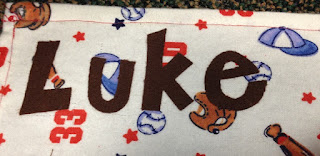Welcome back! I have not posted anything since the board & batten wall, but I have been busy!
For starters, we finally decided to tackle repainting our living room. We live in an open floor plan home. The dining area, kitchen, and living room are all open. And on top of that, we have a two story living room and foyer so the walls are MASSIVE. We can't paint the big walls by ourselves and we are too cheap to hire painters (or we have been too cheap up to this point). When we moved in, everything was white. Or off-white. It's not a crisp white. Ugh. So three or four years ago, we painted one long wall a tan color because I thought I loved warm Earth tones for my house. My husband We picked Sherwin Williams Bagel. And it was not good. I don't want to say terrible, because we certainly could've done worse. But it wasn't what we were hoping for. In some lights, it was fine, but in others, it looked like a Florida Summer home with peach undertones. AH!
I think I see a recurring theme that as first time homeowners, we weren't very good at picking out paint colors...
Anyway, I think we tried to adjust to this paint color instead of just realizing it was not what we wanted and starting over. So it's been that color ever since. And very recently, I realized that gray and white and light and bright and airy is my jam! So after painting the master bedroom Behr Dark Pewter and totally LOVING it, we really wanted rid of that Bagel. And we did it! It was so hard to pick a gray. The first two samples we brought home were so similar, you could hardly tell a difference and we didn't love either one. So we went back for two more and finally picked Glidden Pebble Gray. But we had it mixed in Behr Premium Plus Ultra because it's amazing and we are never going to use another kind of paint! We started painting last weekend, but then I caught a cold from Charli and was down for the count. We painted a little more this past weekend, but have one big wall to go so I will post some before and after pics when we wrap that up this week/weekend.
In other news, I repaired two toilets. All by myself! A while ago, I noticed our toilet kept making a gurgling sound and would take forever to stop running. I consulted with my dad and he said it was probably the refill valve. He bought a replacement, but we didn't have time to repair it that day. Then I got my water bill. And it was HIGH! I decided to try it myself and see how it went. Worse case scenario: Steven and I would be using the half bath when we needed to go. Turns out, it was super simple and took no time!! The key was really just following directions very carefully.
Next thing I know, I'm upstairs and notice THIS toilet making gurgling sounds and seeming to run for a long time. When I lifted the tank lid, it was just slowly trickling water down the over-flow pipe....That is totally efficient. :-| So we got another refill valve kit and I replaced that one this weekend. It's a super easy fix and I really hope to see a big difference in my water bill this month!
And lastly, I learned that not all faucet replacements are equal. I started my faucet replacements with mine, that way if I messed it up, Steven's sink was still in working order until my dad could come down and straighten out my mess. But other than a cross-threaded nut from the previous faucet, it went perfectly! That cross-threaded nut really took it out of me though so I waited a few days before doing Steven's sink. When I felt refreshed, I tackled it with enthusiasm! Thinking, this will be easy-peasy and I'll be done in no time. But it leaked! And no matter how much I tightened everything, it kept leaking! So following advice from my dad, I applied some extra silicone to the rubber ring under the sink around the drain pipe. 30 minutes late, we were leak free!! But I'll tell ya....I am not jumping up to replace any more faucets any time soon.
That's it for this update...stay patient with me as we start the first week of school with students and we are dog tired. We will eventually finish painting our main living area and I will post some pictures. :) Come back soon!
~Kasey




















